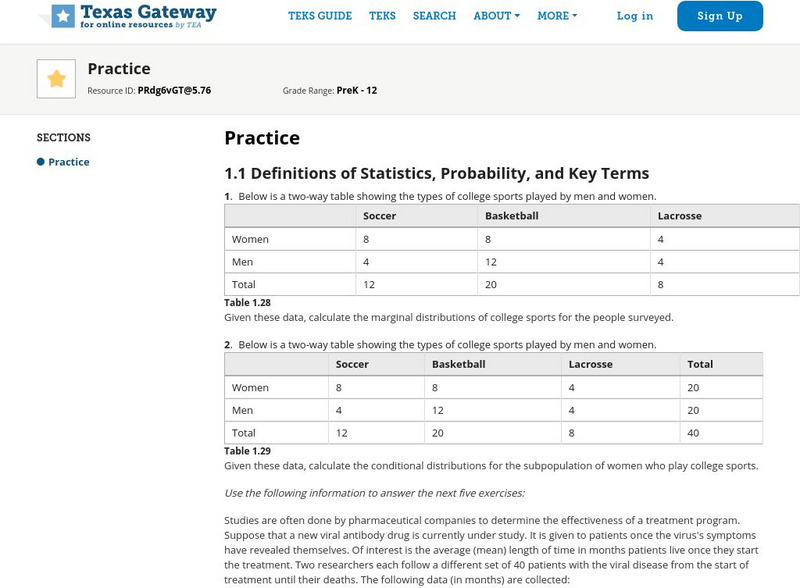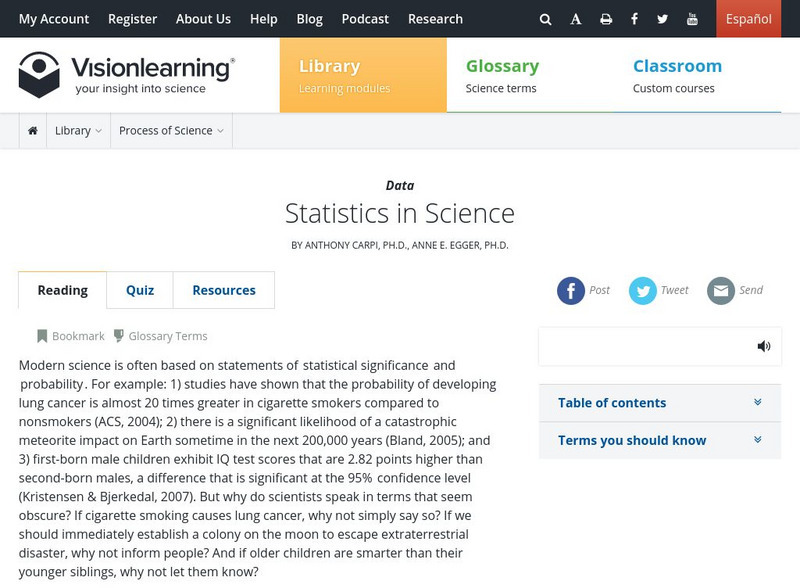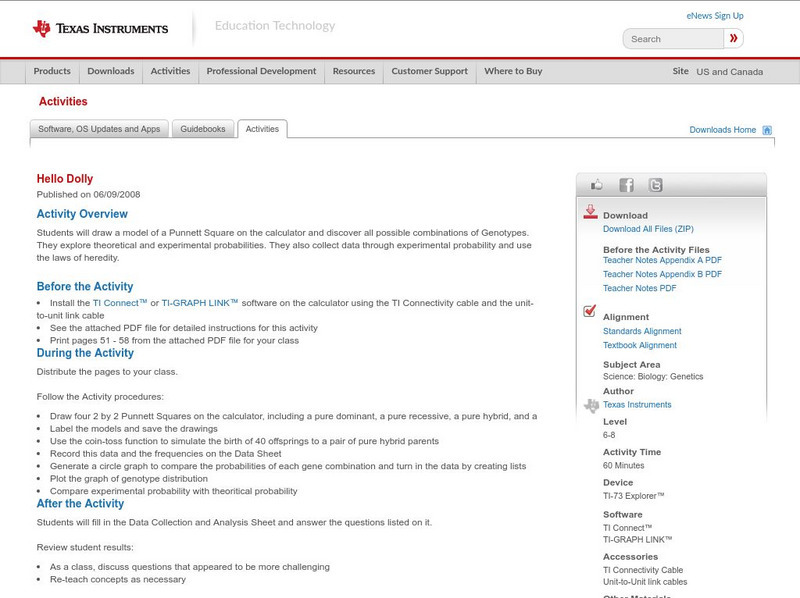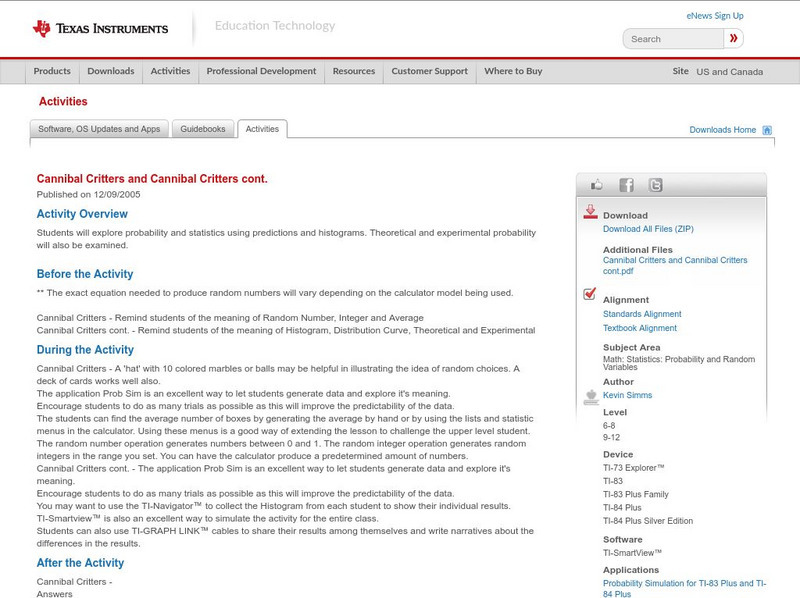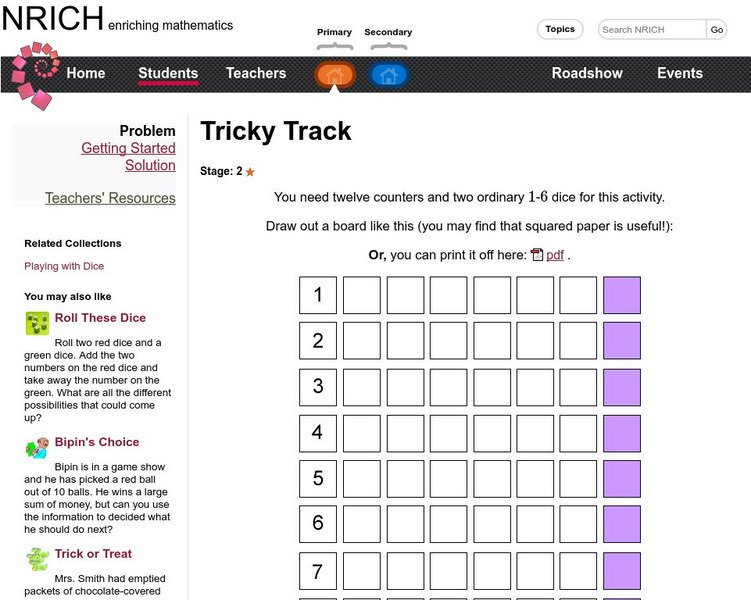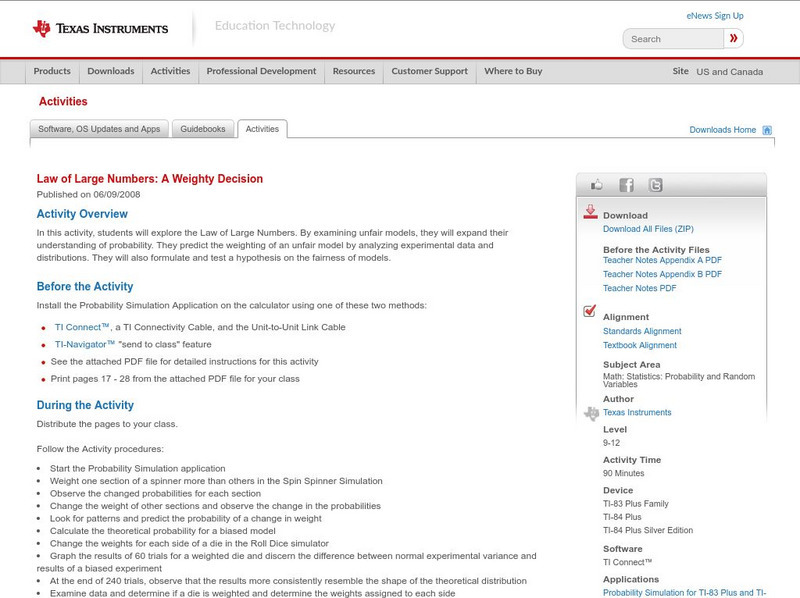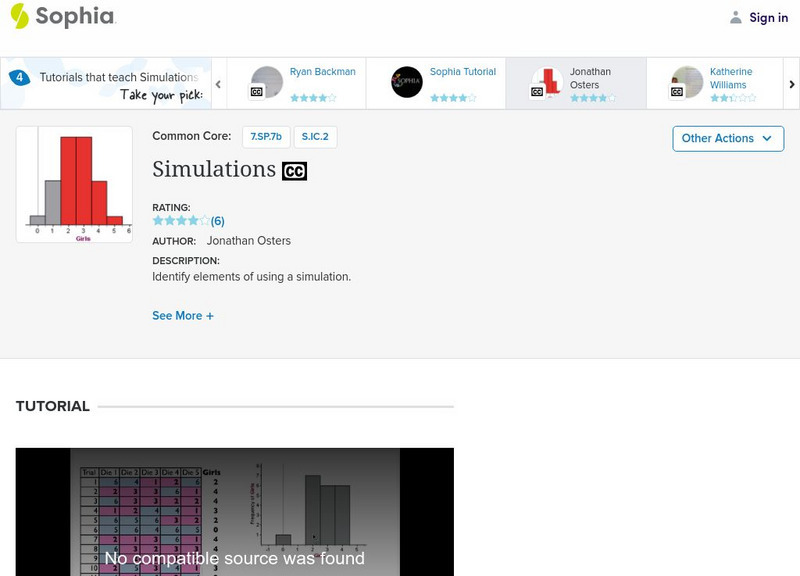Hi, what do you want to do?
ClassFlow
Class Flow: Dice and Probability
[Free Registration/Login Required] This flipchart is designed to explore the probability of rolling certain values using the dice tool. By the end of this lesson, the students will have gathered experimental data, made hypothesis about...
Shodor Education Foundation
Shodor Interactivate: Marbles
Students learn about sampling with and without replacement by simulating marbles being drawn out of a bag. Settings can be altered to explore conditional probability.
University of Cambridge
University of Cambridge: Maths and Sports: Archery
Use our interactivity to simulate picking up a bow and some arrows and trying to hit the target a few times. Can you work out the best settings for the sight? This activity gives an opportunity to gather and collate data, and to test...
Texas Education Agency
Texas Gateway: Tea Statistics: Sampling and Data: Practice
A set of exercises where students must analyze statistcal data and methodology and answer questions about distributions, sampling, results, accuracy, frequency, experimental design, and ethical practices.
Annenberg Foundation
Annenberg Learner: Against All Odds: Inside Statistics
The video series shows students the relevance of statistics in real-world settings. The resource includes 26 half-hour videos. Topics include normal distributions, probability, random variables, experimental design, and describing data.
Vision Learning
Visionlearning: Data: Statistics in Science
An explanation of how statistics allows scientist to explore the degree of uncertainty that accompanies conclusions that are based on data collected during experimentation and research.
Texas Instruments
Texas Instruments: Hello Dolly
Students will draw a model of a Punnett Square on the calculator and discover all possible combinations of Genotypes. They explore theoretical and experimental probabilities. They also collect data through experimental probability and...
Texas Instruments
Texas Instruments: Cannibal Critters and Cannibal Critters Cont.
Students will explore probability and statistics using predictions and histograms. Theoretical and experimental probability will also be examined.
National Council of Teachers of Mathematics
Nctm: Figure This: Are Dice Fair or Not?
Is it fair or not fair? That is the question. Try this math challenge where you use your probability and number sense skills to determine whether or not a game is fair. Find out how mastering this challenge can be useful in real life...
Other
Utah St. Univ.: Coin Tossing Applet
An interesting Applet that simulates the toss of a coin 100 times. A quick count of the results and an accompanying graph make this site useful for both teacher and student.
National Council of Teachers of Mathematics
The Math Forum: The Cereal Box Problem
A cereal company is offering six different prizes in their boxes. How many boxes would you expect to have to purchase in order to collect all six prizes? Known as the Cereal Box Problem, this question is explored here. A solution is...
University of Cambridge
University of Cambridge: Nrich: Tricky Track Game
The directions on this site are for an interesting, two-player dice game named Tricky Track. Grab a partner and play. Do your results surprise you?
McGraw Hill
Glencoe: Self Check Quizzes the Language of Chance
Questions are randomly created to quiz learners on the language of chance. Hints and solutions are included.
Texas Instruments
Texas Instruments: Law of Large Numbers: A Weighty Decision
In this activity, students will explore the Law of Large Numbers. By examining unfair models, they will expand their understanding of probability. They predict the weighting of an unfair model by analyzing experimental data and...
Other
Stat Soft: Statistics Glossary
Dozens of statistical terms are defined and illustrated in this glossary.
Hunkins Experiments
Hunkin's Experiments
Hunkin's Experiments is a group of simple cartoon illustrations of scientific principles. Some would work well in the classroom, but others have little value beyond entertaining students. All of the projects are easy to do and use...
Texas Instruments
Texas Instruments: Heads Up! (Continued)
In this activity, students explore how to write and enter a calculator program that will simulate coin tossing for a given number of times and count the number of heads and tails. They analyze the program and modify it.
Texas Instruments
Texas Instruments: The Ordinary Man
In this activity, students estimate the heights of people and compare the estimates to the actual heights in a scatter plot.
Sophia Learning
Sophia: Simulations: Lesson 2
This lesson will explain simulations. It is 2 of 3 in the series titled "Simulations."
University of Georgia
University of Georgia: Inter Math: Outcome
This InterMath site gives a description of a probability outcome along with an example involving a six sided die. Be sure to follow the links to related terms, challenging problems, more information, and the interactive check point...
Other
Stat Soft: Getting Started With Statistics Concepts
Definitions of the basic concepts in statistics. Great for review and discussion or for introduction into topics.
Oswego City School District
Regents Exam Prep Center: Statistical Studies, Central Tendency, and Dispersion
The mathematics tutorial investigates statistical studies, central tendency, and dispersion. The lesson consists of class notes, calculator tips, examples, and practice problems with solutions. The teacher resource includes an activity...
Scientific American
Scientific American: Smart People Believe Weird Things
This article, published by Scientific American (September 2002), explores how smart people can believe weird and silly things. The article comes to the conclusion that our beliefs are shaped more by our environment than our understanding...








